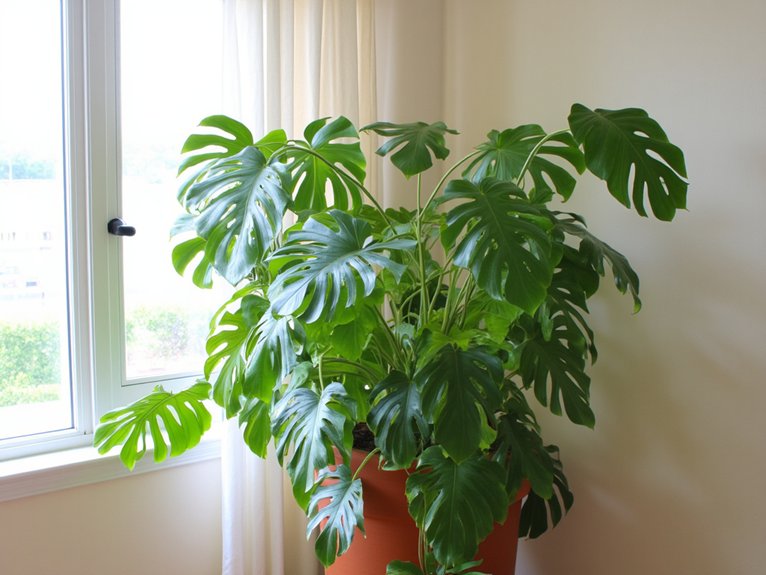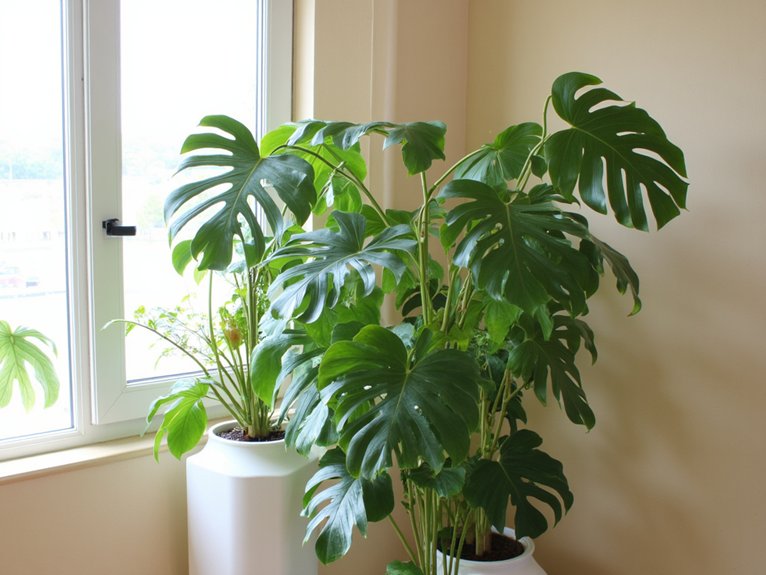Monsteras thrive when their natural habitat conditions are replicated with precision in the home environment. Plant specialist Dr. Sarah Chen notes, “These tropical plants evolved specifically to catch dappled sunlight through the rainforest canopy.” Understanding the delicate balance of light exposure can transform a struggling Monstera into a thriving specimen with dramatic splits and holes in its leaves. The journey to mastering these light requirements starts with recognizing what these plants actually need versus common misconceptions.
Contents
Understanding Your Monstera’s Natural Light Requirements

Light plays a fundamental role in the growth and development of Monstera plants, which have evolved specific requirements from their rainforest origins. These tropical climbers naturally receive filtered sunlight through dense canopies, adapting to varying light intensity throughout different growth stages.
In their native habitat, Monsteras experience bright, indirect light for 12-14 hours daily. This natural pattern supports the formation of their distinctive perforated leaves and promotes robust stem development. Understanding these light requirements helps indoor gardeners recreate ideal conditions, typically achieved by placing plants near east or west-facing windows where light intensity gradually changes throughout the day.
Signs Your Plant Is Getting Too Much or Too Little Light
A Monstera plant communicates its light satisfaction through distinct physical changes that alert observant plant owners to potential problems. When experiencing insufficient light, growth patterns become leggy with elongated stems and fewer leaf splits, while leaves remain mostly whole.
Signs of excessive light include:
- Brown, crispy patches on leaves
- Curling or wilting foliage
- Yellowing between leaf veins
Light stress manifests differently depending on severity:
- Mild: Slight leaf curling
- Moderate: Slower growth and pale coloring
- Severe: Burnt edges and tissue damage
Regular monitoring helps identify these indicators early, allowing for timely adjustments in plant placement.
Perfect Indoor Placement for Optimal Growth

Understanding your Monstera’s warning signs makes selecting the perfect indoor spot much simpler for achieving best growth conditions. A bright, north-facing room with filtered light through sheer curtains provides prime growth while preventing leaf burn. East-facing windows work exceptionally well, offering gentle morning sun and afternoon shade.
Position the plant 3-6 feet from windows, adjusting pot size as needed for stability. This placement allows for a consistent watering routine, as evaporation remains steady. Verify the selected spot maintains temperatures between 65-85°F and offers enough space for the plant to grow vertically, ideally near a support structure.
Seasonal Light Adjustments for Year-Round Health
Because seasonal changes profoundly affect indoor light intensity, Monstera plants require strategic adjustments throughout the year to maintain ideal growth. During winter months, moving plants closer to windows compensates for reduced daylight hours, while summer often demands greater distance to prevent leaf burn.
Seasonal pruning helps manage growth patterns as light conditions shift. In winter, trim sparingly to preserve energy, while summer allows for more aggressive pruning. Humidity control becomes especially critical during heating seasons when indoor air dries considerably.
Rotating the plant quarterly guarantees even growth, as shorter days and varying sun angles influence how light reaches the foliage.
Creating the Ideal Light Environment to Encourage Fenestration

Light levels play an essential role in encouraging the signature fenestration, or holes and splits, that make Monstera leaves so distinctive. To promote ideal leaf fenestration, position plants where they receive bright indirect light measuring 1,000-2,000 foot candles throughout the day.
The ideal setup involves placing Monsteras 3-6 feet from east or south-facing windows with sheer curtains. This filtered light intensity mimics their natural rainforest habitat, where dappled sunlight penetrates the canopy. For areas lacking natural light, supplemental grow lights positioned 12-18 inches above the plant can provide adequate illumination for proper fenestration development.
